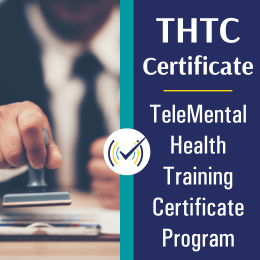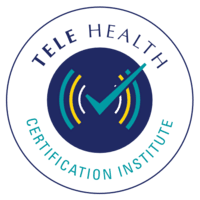We are not aware of any specific rules and regulations of the practice of telemental health services for Counselors. The provision of social work services to an individual in this state, through telephonic, electronic, or other means, regardless of the location of the social worker, shall constitute the practice of social work and shall be subject to regulation. We are not aware of any specific rules and regulations of the practice of telemental health services for MFTs. Oklahoma is a PSYPACT PARTICIPATING STATE- OK HB 1057 (Enacted 4/29/2019) "To practice telepsychology under the authority of PSYPACT, you will need to apply for and obtain an E.Passport from the Association of State and Provincial Psychology Boards (ASPPB) and apply for and obtain an Authority to Practice Interjurisdictional Telepsychology (APIT) from the PSYPACT Commission." Oklahoma Telemedicine Act "As used in this act, "telemedicine" means the practice of health care delivery, diagnosis, consultation, treatment, transfer of medical data, or exchange of medical education information by means of audio, video, or data communications. Telemedicine is not a consultation provided by telephone or facsimile machine. Added by Laws 1997, c. 209, § 2, eff. July 1, 1997. A. For services that a health care practitioner determines to be appropriately provided by means of telemedicine, health care service plans, disability insurer programs, workers' compensation programs, orstate Medicaid managed care program contracts issued, amended, or renewed on or after January 1, 1998, shall not require person‐to‐person contact between a health care practitioner and a patient. B. Subsection A of this section shall apply to health care service plan contracts with the state Medicaid managed care program only to the extent that both of the following apply: 1. Telemedicine services are covered by, and reimbursed under, the fee‐for‐service provisions of the state Medicaid managed care program; and 2. State Medicaid managed care program contracts with health care service plans are amended to add coverage of telemedicine services and make any appropriate capitation rate adjustments. Added by Laws 1997, c. 209, § 3, eff. July 1, 1997. A. Prior to the delivery of health care via telemedicine, the health care practitioner who is in physical contact with the patient shall have the ultimate authority over the care of the patient and shall obtain informed consent from the patient. The informed consent procedure shall ensure that, at least, all the following information is given to the patient: 1. A statement that the individual retains the option to withhold or withdraw consent at any time without affecting the right to future care or treatment or risking the loss or withdrawal of any program benefits to which the individual would otherwise be entitled; 2. A description of the potential risks, consequences, and benefits of telemedicine; 3. A statement that all existing confidentiality protections apply; 4. A statement that patient access to all medical information transmitted during a telemedicineinteraction is guaranteed, and that copies of this information are available at stated costs, which shall not exceed the direct cost of providing the copies; and 5. A statement that dissemination to researchers or other entities or persons external to the patient‐practitioner relationship of any patient‐identifiable images or other patient‐identifiable information from the telemedicine interaction shall not occur without the written consent of the patient. B. The patient shall sign a written statement prior to the delivery of health care via telemedicine indicating that the patient understands the written information provided pursuant to subsection A of this section and that this information has been discussed with the health care practitioner or the practitioner's designee. C. If the patient is a minor or is incapacitated or mentally incompetent such that the patient is unable to give informed consent, the consent provisions of this section shall apply to the patient's representative. The consent provisions of this section shall not apply in an emergency situation in which a patient is unable to give informed consent and the patient's representative is unavailable. D. The failure of a health care practitioner to comply with the provisions of this section shall constitute unprofessional conduct. E. The written consent statement signed by the patient shall become part of the patient's medical record. F. The consent provisions of this section shall not apply to consultations among or between health care practitioners or to other telemedicine interactions in which the patient is not directly involved. G. The consent provisions of this section shall not apply to consultations among or between health care practitioners and inmates in the custody of the Department of Corrections. H. For purposes of the delivery of mental health care via telemedicine, the use of telemedicine shall be considered a face‐to‐face, physical contact and in‐person encounter between the health care provider and the patient, including the initial visit." Refer to the source provided for all requirements and limitations. Oklahoma Statutes Citationized Title 59. Professions and Occupations Chapter 11 - Medicine “1. "Store and forward technologies" means the transmission of a patient's medical information from an originating site to the physician or practitioner at the distant site; provided, photographs visualized by a telecommunications system shall be specific to the patient's medical condition and adequate for furnishing or confirming a diagnosis or treatment plan; 2. "Telemedicine" means the practice of health care delivery, diagnosis, consultation, evaluation and treatment, transfer of medical data or exchange of medical education information by means of a two-way, real-time interactive communication, not to exclude store and forward technologies, between a patient and a physician with access to and reviewing the patient's relevant clinical information prior to the telemedicine visit. "Telemedicine" and "store and forward technologies" shall not include consultations provided by telephone audio-only communication, electronic mail, text message, instant messaging conversation, website questionnaire, nonsecure video conference or facsimile machine.” Refer to the source provided for all requirements and limitations. OK Statutes, Title 59, Ch. 11 Sec. 478.1 “A valid physician-patient relationship may be established by an allopathic or osteopathic physician with a patient located in this state through telemedicine, provided that the physician: “Telemedicine and store and forward technology encounters shall comply with the Health Insurance Portability and Accountability Act of 1996 and ensure that all patient communications and records are secure and confidential. Telemedicine encounters and encounters involving store-and-forward technology shall not be used to establish a valid physician-patient relationship for purpose of prescribing opiates, synthetic opiates, semisynthetic opiates, benzodiazepine, or carisprodol, but may be used to prescribe opioid antagonists or partial agonists.” “The relationship shall not be based solely on the receipt of patient health information by a physician. The duties and obligations created by a physician-patient relationship shall not apply until the physician affirmatively: Refer to the source provided for all requirements and limitations. “As a party state to the Nurse Licensure Compact (NLC), Oklahoma issues multistate licenses to nurses and applicants who reside in the state and recognizes multistate licenses issued by other party states, for practice in Oklahoma. A nurse holding a multistate license is entitled to practice in any NLC party state, but must comply at all times with the laws of the state where he or she is currently practicing.” “It should be noted that not every state in the US is an NLC party state; a map of participating states, as well as further resources related to the NLC, are available on the Nurse Licensure Compact website.” Refer to the source provided for all requirements and limitations. OK Statutes, Title 59, Ch. 11 Sec. 478.1 “A valid physician-patient relationship may be established by an allopathic or osteopathic physician with a patient located in this state through telemedicine, provided that the physician: “Telemedicine and store and forward technology encounters shall comply with the Health Insurance Portability and Accountability Act of 1996 and ensure that all patient communications and records are secure and confidential. Telemedicine encounters and encounters involving store-and-forward technology shall not be used to establish a valid physician-patient relationship for purpose of prescribing opiates, synthetic opiates, semisynthetic opiates, benzodiazepine, or carisprodol, but may be used to prescribe opioid antagonists or partial agonists.” “The relationship shall not be based solely on the receipt of patient health information by a physician. The duties and obligations created by a physician-patient relationship shall not apply until the physician affirmatively: Refer to the source provided for all requirements and limitations. Source: OK Health Care Authority, Telehealth "(10) A telehealth service is subject to the same SoonerCare program restrictions, limitations, and coverage which exists for the service when not provided through telehealth; provided, however, that only certain telehealth codes are reimbursable by SoonerCare. For a list of the SoonerCare-reimbursable telehealth codes, refer to the OHCA's Behavioral Health Telehealth Services and Medical Telehealth Services, available on OHCA's website, www.okhca.org." Refer to the source provided for all requirements and limitations. Originating Site Reimbursement: Source: OK Statute, Title 36 Sec. 6803 "A. For services that a health care practitioner determines to be appropriately provided by means of telemedicine, health care service plans, disability insurer programs, workers' compensation programs, or state Medicaid managed care program contracts issued, amended, or renewed on or after January 1, 1998, shall not require person-to-person contact between a health care practitioner and a patient." Refer to the source provided for all requirements and limitations. We are not aware of any explicit payment parity. *Clinicians who have had an experience with telehealth reimbursement in this state are invited to share their experiences in the comments section below: a) type of service provided; b) insurance provider; c) payment parity, payment issues, or insurance requirements. We are not aware of any permission that allows for services delivered by out-of-state providers.Counselors
Social Workers
Social Workers
Marriage and Family Therapists
Psychologists
Psychiatrists
Oklahoma Professional Regulation/Health & Safety Online Prescribing
Nurses
Oklahoma Professional Regulation/Health & Safety Online Prescribing
Medicaid Telehealth Parity Law
Private Pay Telehealth Parity Law
Payment Parity
Permission for the Temporary Practice of Clinicians Licensed Outside the State
Oklahoma
Note: As this is a free resource and Rules and Regulations regarding Telehealth are always changing, we appreciate any updates or corrections. They can be emailed to us at [email protected] with a link to the source or a citation of the rule or regulation.
Telemental health is not a separate service from mental health services. All state licensing boards require that licensed clinicians follow all the regulations for practicing under their license no matter what medium of communication is used. All licensing boards also require that clinicians only practice within the boundaries of their competence. This usually requires education, continuing education, and/or supervision in telemental health. Complete our telehealth training program to cover all the essential competencies of providing telemental health services and earn the THTC (Telemental Health Training Certificate).




The course was so informative and I was glued to my screen for the entire duration. I received so much knowledge concerning ethics in telehealth and I am greatly encouraged to read about all the standards and policies that pertain to my practice. Thank you!.